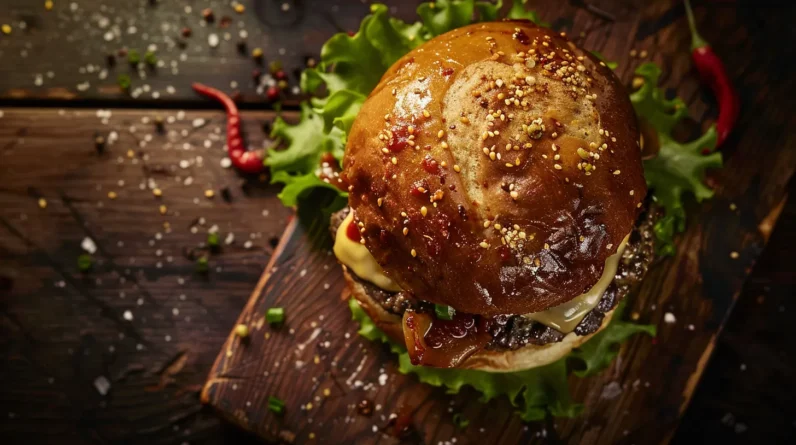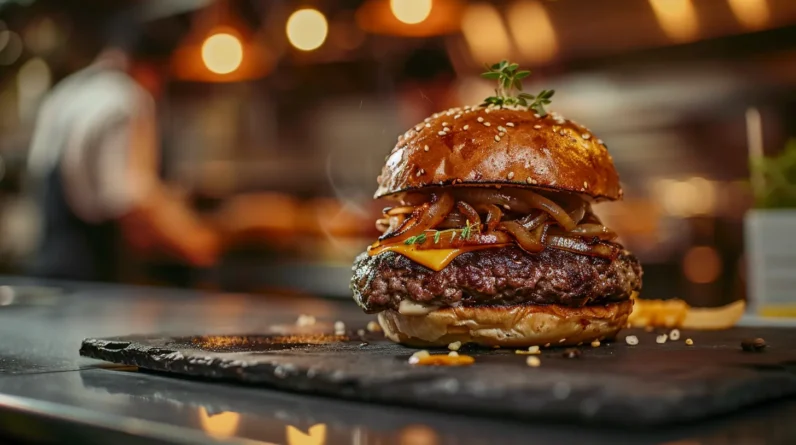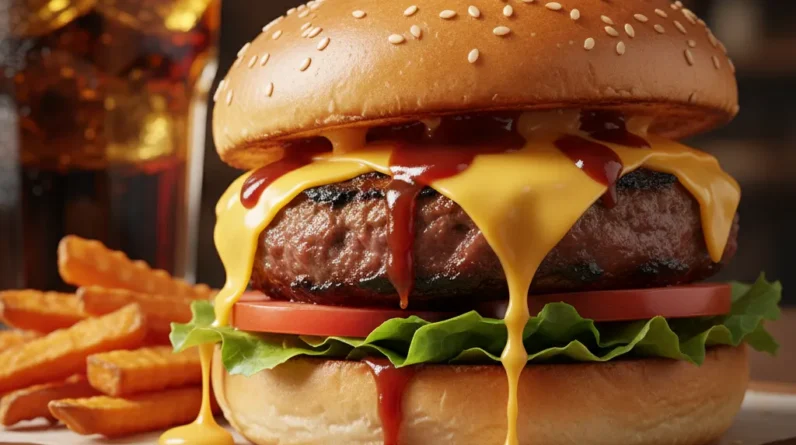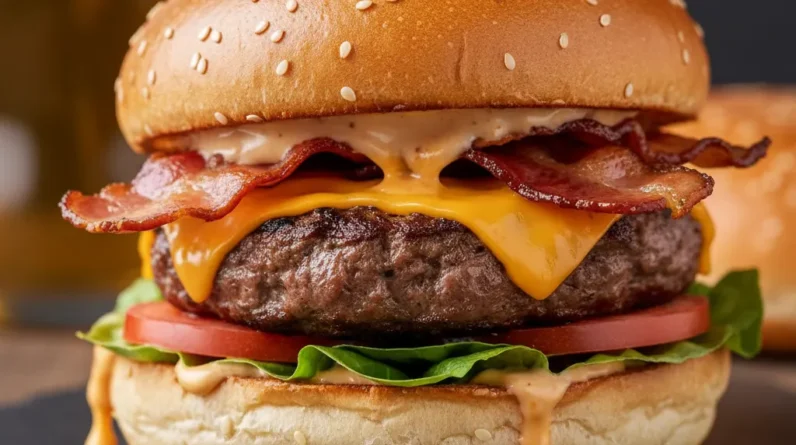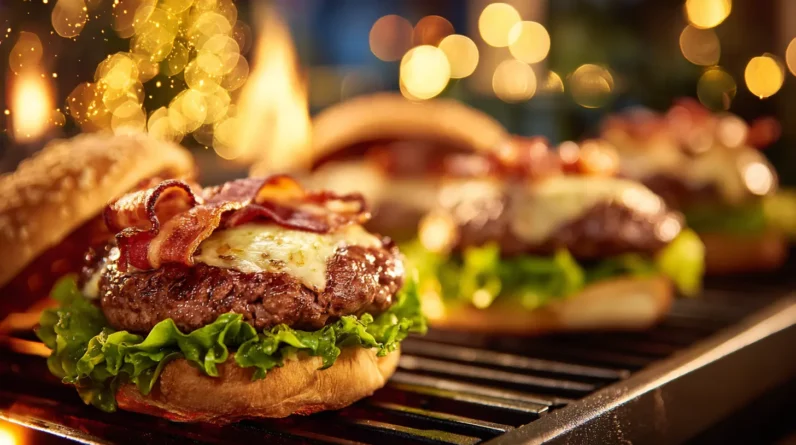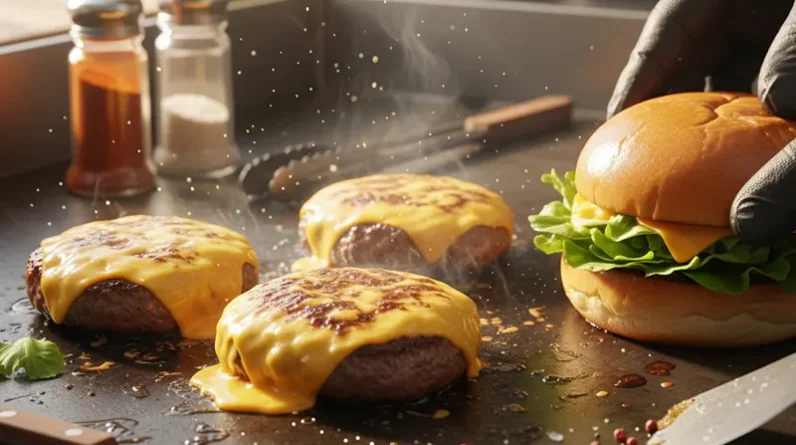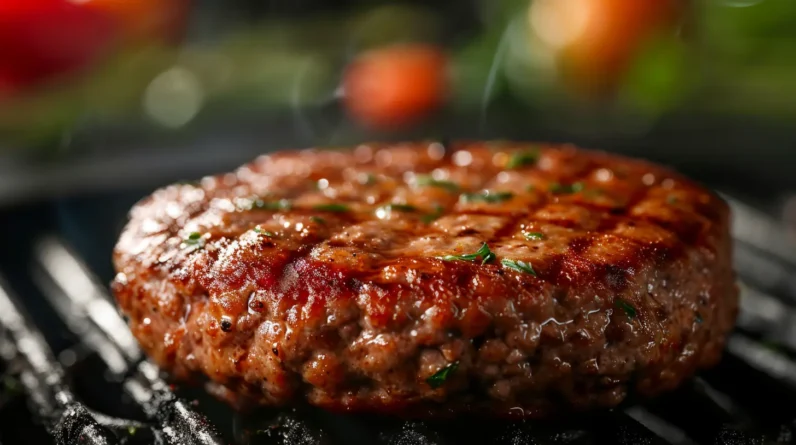
To achieve a perfect sear without overcooking your burger, we preheat our skillet or grill to medium-high heat (375-400°F) and test the heat with water droplets. We hand-form patties to maintain a coarser grind for moisture retention, then sear for 3-4 minutes per side without moving the burgers for proper crust development. We reduce the heat to medium after flipping to prevent overcooking, and use a thermometer to check internal temperatures. With ideal internal temperatures ranging from 120°F for rare to 160°F for well-done, the key to a perfect sear is balancing high heat and precise temperature control.
Cooking Fundamentals for Burgers
When cooking burgers, several key factors come into play to achieve that perfect sear. High heat is essential for searing meat, as it sparks the Maillard reaction, creating a deep, flavorful crust while preventing the meat from becoming overcooked inside.
We find that forming patties by hand yields better texture and juiciness than machine-formed patties, as hand formation allows for a looser structure that retains moisture. When cooking the meat, the fat content affects our method; leaner meats may require oil to prevent sticking, while fattier meats typically do not. We monitor the internal temperature closely, removing burgers from the heat 5-10°F below our desired doneness to account for carryover cooking.
Preheating Techniques for Searing
We now turn our attention to preheating techniques, a critical step in creating the ideal environment for searing burgers.
To achieve a perfect sear, it’s crucial to preheat your cast iron skillet or grill to the right temperature.
When preheating, keep the following in mind:
1. Temperature control: Preheat to medium-high heat, ideally around 375-400°F.
2. Test the heat: Drop a few water droplets on the pan; they should sizzle and evaporate immediately.
3. Preheat for the right meat: If using lean meats, apply a light coating of oil to prevent sticking.
Achieving a Perfect Sear
To achieve a perfect sear on our burgers, we must create a delicate balance between a beautifully caramelized crust and a tender interior. Forming our burger patties by hand is key, as it maintains a coarser grind that allows for better moisture retention and a more flavorful sear.
When cooking, we expose the meat to medium-high heat, either on a preheated cast iron skillet or grill. We sear the burgers for 3-4 minutes on one side without moving them, then flip the meat and reduce the heat to medium.
This technique helps us develop a proper crust while preventing overcooking. By controlling the heat and cooking time, we set the stage for a perfectly seared burger with a tender interior.
Doneness Guidelines for Burgers
Achieving a perfect sear is just the first step in crafting the ultimate burger. To guarantee our burgers are cooked to perfection, we need to take into account the internal temperature.
Here are the ideal internal temperatures for different levels of doneness:
1. 120°F for rare
2. 130°F for medium-rare
3. 140°F for medium
To achieve the perfect doneness, we remove burgers from heat when they’re 5-10°F below the target temperature, allowing for carryover cooking.
Using a meat thermometer is essential for accurately checking the internal temperature. For safety and quality, we aim for a minimum internal temperature of 160°F for well-done burgers.
Serving and Resting Techniques
Mastering the art of serving and resting burgers is just as vital as grilling them to perfection. Once we’ve achieved that perfect sear, it’s important to let the burgers rest. This allows the juices to redistribute, guaranteeing a juicier and more flavorful bite.
We recommend allowing burgers to rest for 3-5 minutes after cooking. To maintain ideal temperature and texture, serve burgers immediately after resting. When resting, consider covering them loosely with aluminum foil to retain warmth without overcooking.
A meat thermometer confirms they’re hot enough, reaching an internal temperature of at least 160°F for safety. Proper resting techniques prevent the meat sears from drying out, resulting in a better eating experience.
Conclusion
We’ve cracked the code to a perfectly seared burger. By mastering the fundamentals of cooking, preheating techniques, and doneness guidelines, you’ll be the maestro of the grill. The secret to a show-stopping sear lies in the harmony between heat, time, and technique. Now, with this knowledge at your fingertips, go forth and sizzle your way to burger perfection – where every bite is a symphony of flavors and textures.


